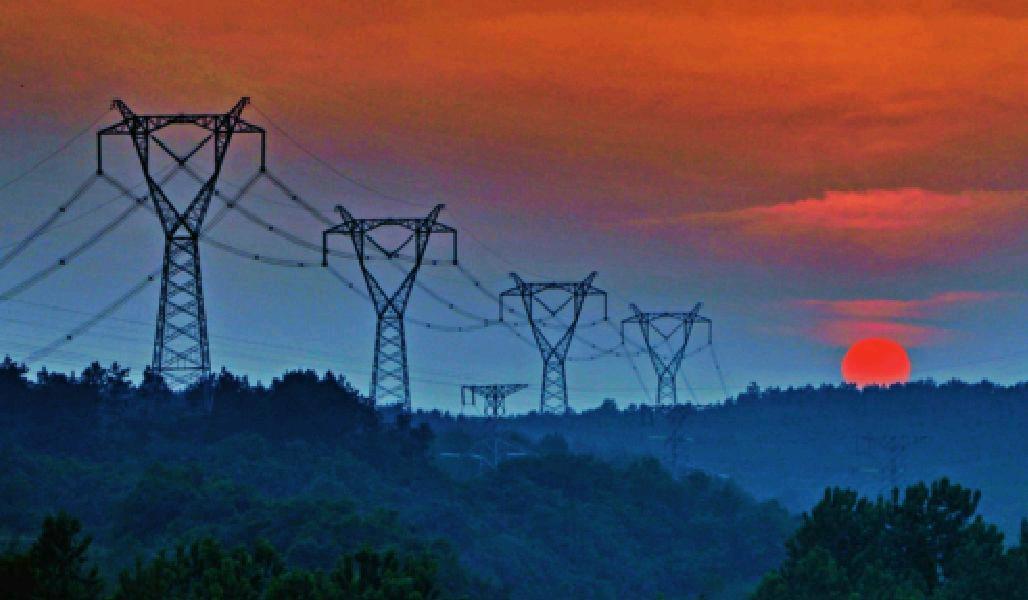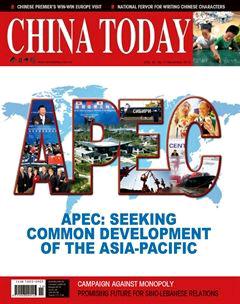Will Asian Infrastructure Investment Bank Become a Reality?
By+BAI+MING
THE world economic pattern is gradually changing in the wake of the international financial crisis. Under the context of economic globalization, the international division of labor is still in progress, but encounters ever more challenges. In addition to the hurdles confronting the multilateral trading system, further adjustments are also required to the global financial architecture. Regional financial cooperation, in common with regional trade cooperation, needs more favorable conditions to develop. The interaction among members of the Asia-Pacific Economic Cooperation (APEC) shows that China has a significant capacity for trade cooperation, and that it will also play an important role in regional financial cooperation.
China is now in the midst of establishing three cooperation platforms. One is the BRICS Development Bank, whose headquarters will be in Shanghai. Another is the Shanghai Cooperation Organization (SCO) Development Bank, which is still under design. And during Chinese President Xi Jinpings trip to Southeast Asia in October 2013, he proposed establishing an Asian Infrastructure Investment Bank (AIIB).
New Infrastructure Financing Option
As of August 2014, after four rounds of negotiations, 20 countries were willing to become founding members of the AIIB.
In fact, as early as May 2, 2014, Chinese Finance Minister Lou Jiwei attended the ministerial meeting in Astana, capital of Kazakhstan, on preparations for the AIIB. Other participants included his counterparts in 15 countries, namely Laos, Cambodia, Myanmar, Thailand, Vietnam, Malaysia, Singapore, Brunei, the Philippines, Indonesia, Kazakhstan, South Korea, Mongolia, Pakistan, and Sri Lanka, 10 of whom are ASEAN member nations. China and South Korea also have their respective cooperation frameworks with ASEAN, but these are trade rather than financial cooperation platforms. It is imperative that corresponding financial cooperation platforms be built.
Global management consulting firm McKinsey & Co predicts that from 2010 to 2020, emerging economies in Asia will need US $10 trillion for infrastructure investment, including US $4.1 trillion for energy sources, US $2.5 trillion for transportation, US $1.1 trillion for communications, and US $400 billion for water and environmental health. The fact is that some of the 16 AIIB founding members are underdeveloped countries whose lack of capital in recent years precludes launching any of their infrastructure projects.
Nine of the 16 founding countries, namely China, South Korea, Thailand, Vietnam, Malaysia, Singapore, Brunei, the Philippines, and Indonesia, are also part of APEC. Cooperation within APEC, however, is disproportionate, especially since the U.S. and certain APEC members signed the Trans-Pacific Partnership Agreement (TPP). Setting up the AIIB is vital to China and various APEC member nations. On the one hand, establishing the AIIB will contribute to building an APEC financial cooperation platform. This will foster balanced development of APECs trade and financial cooperation. On the other hand, the AIIB could change the general trend whereby wealthy countries, great powers, or APEC member nations lead regional economic cooperation. It could thus enable less developed member countries to obtain maximal benefits from APEC.
The Asian Development Bank (ADB) has in recent years played an indisputably important role in facilitating the economic advance of developing Asian countries and accelerating their infrastructure construction. However, when facing the actual needs of Asian developing countries, the ADB is generally unable to accomplish all it sets out to, let alone achieve a cooperative balance with APEC. The ADB predicts that, by the year 2020, there will be an annual US$800 billion input of infrastructure construction in Asia. But the ADB can only offer annual infrastructure project loans of US $10 billion. Under this scenario, establishing the AIIB will offer a new financing channel for Asian developing countries.
Necessary Competition
The forthcoming AIIB and the longexisting ADB have many overlapping functional orientations as regards providing assistance for Asian developing countries in infrastructure construction.
As is universally known, Chinas economic growth is inextricable from follow-up infrastructure. Indeed, a considerable number of Chinas infrastructure construction projects over the past years, such as railways, highways, and environmental protection facilities, have been financed by ADB loans.
What should be borne in mind, however, is that although ADB serves Asian countries, its shareholder composition is complicated. Japan and the U.S. are two principal ADB shareholders. Others include a number of developed countries. At present, Japan, the U.S., Eurozone countries, Australia, and New Zealand jointly own 50.6 percent of ADBs voting power. It is consequently hard to judge whether or not ADB milestone decisions embody the actual needs of developing countries, let alone enable more of them to benefit from APECs development.
In the current world economic pattern, developed countries headed by the U.S. may still be the main players, but their unilateral predominance faces a challenge. Or at least, the world economy leadership is due for reelection. As the worlds second largest economy and largest trading nation, China stands a fighting chance of membership in this leading group. At present, Chinas ADB shareholding is 6.429 percent, as compared with the 15.571 percent each of Japan and the U.S. China also has only 5.442 percent of voting power. But neither Chinas ADB shareholding ratio nor voting power fully reflects the countrys economic status. Chinas proposal to establish the AIIB originates in deeprooted deliberations on offering a fresh financing option for Asian infrastructure construction. It is, moreover, conducive to changing the situation where the same handful of developed economies in APEC calls the shots.
Inevitably, when established the AIIB will compete with the ADB, and may even challenge the status of the World Bank. In my opinion, this is not a bad thing. At least it would force the ADB and the World Bank to focus more on the legitimate demands of the vast numbers of the worlds developing countries. Using credit arrangement as bait, the two entities often make irresponsible remarks about such countries economic structure. In dealing with the relationship between the AIIB and the ADB, the ideal situation would be one where each has its respective emphases along with mutual cooperation. This requires all parties concerned to strengthen communication and broaden their horizons.
Establishment Hopeful
The gap between the AIIBs provisional initial registered capital of US$100 billion and the ADBs capital of US$165 billion is not immense. Chinas ratio of investments could be 50 percent, with South Korea and Singapore more active in the contributions. But should more countries participate, China will accordingly lower its investment ratio.
Chinas foreign exchange reserves stand at US $4 trillion – top in the world. Those of South Korea and Singapore are also considerable. This guarantees capital funds on which to establish the AIIB. The bank will moreover bring into effect a “subscription system” for registered capital, whereby at the initial stage member states need only contribute 20 percent of their investment.
It must be acknowledged that not every Asian country is interested in building the AIIB. As a substantial ADB shareholder, Japan owns much right of speech. Since its foundation in 1966, all successive presidents of the ADB have been Japanese. As the Diaoyu Islands issue has recently alienated Sino-Japanese relations, Japan is unenthusiastic about the AIIB.
Meanwhile, nor is India overly keen on building the AIIB. The country might join the AIIB, according to an official from Indias Ministry of Finance, but only so long as its concerns over who is in charge of it are resolved. India will in fact need US $1 trillion over the next decade for infrastructure investment, and the ADB is clearly unable to fill the existing finance gap. Since it has a large number of infrastructure projects, however, India will be in no hurry to close all avenues that lead to joining the AIIB. During President Xis visit to India, Prime Minister Modi said that the country would study the proposal to participate in the AIIB. For the moment, India merely has a positive attitude towards it.
However, the attraction to join the AIIB is irresistible. When China and Mongolia forged a strategic partnership last August, Mongolia announced its participation in AIIB construction as a founding member. During his September visit to Sri Lanka, President Xi also invited Sri Lanka to join in building the AIIB. Judging from current responses, prospects for establishing the AIIB are on the whole optimistic, although challenges might arise to its follow-up development.

